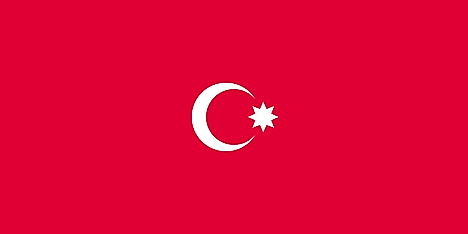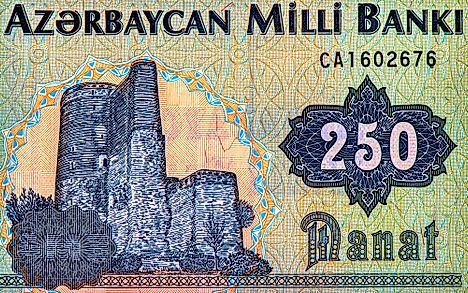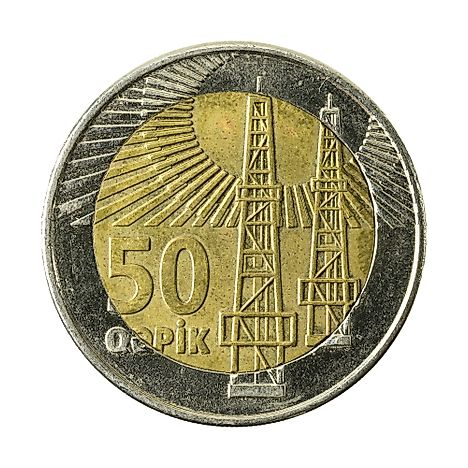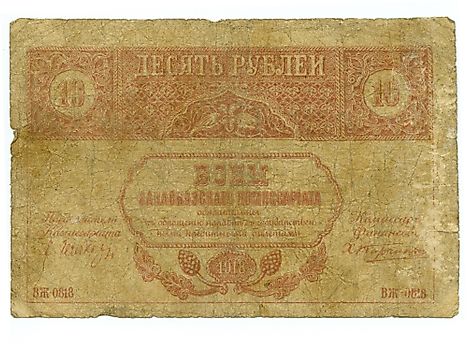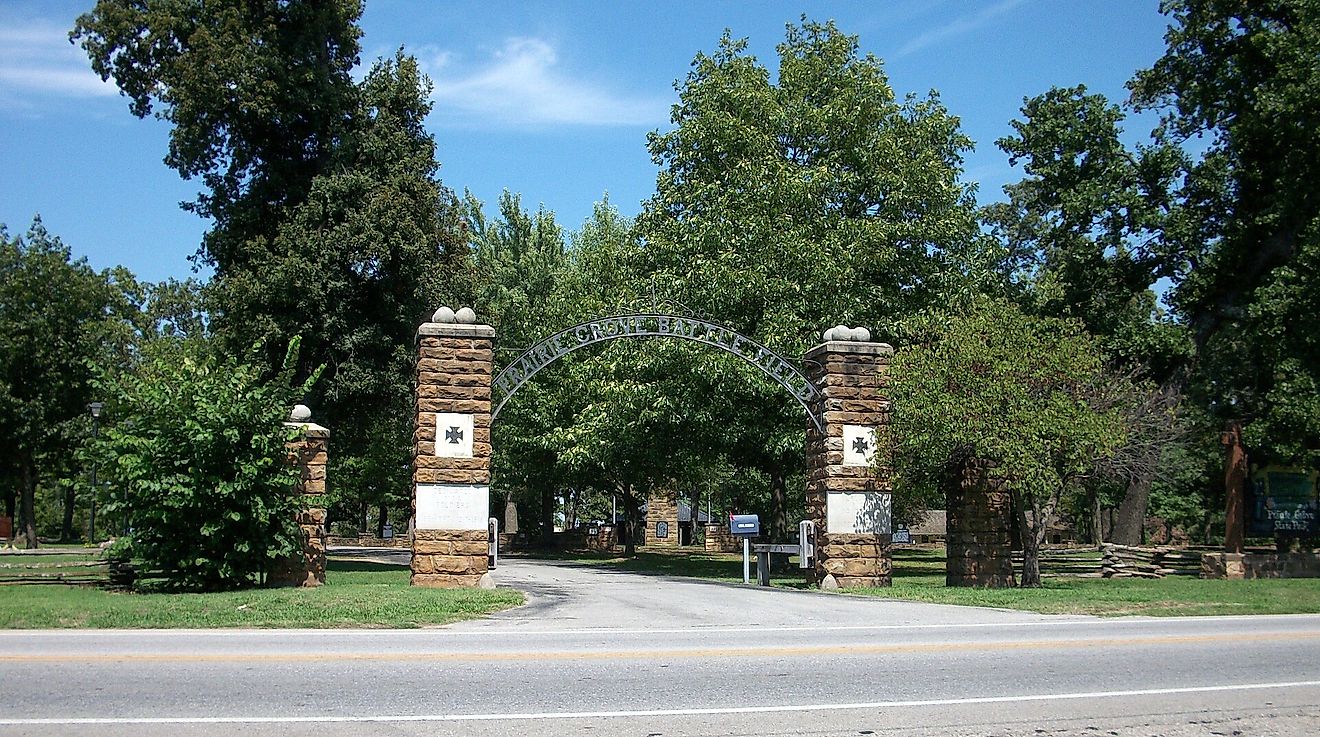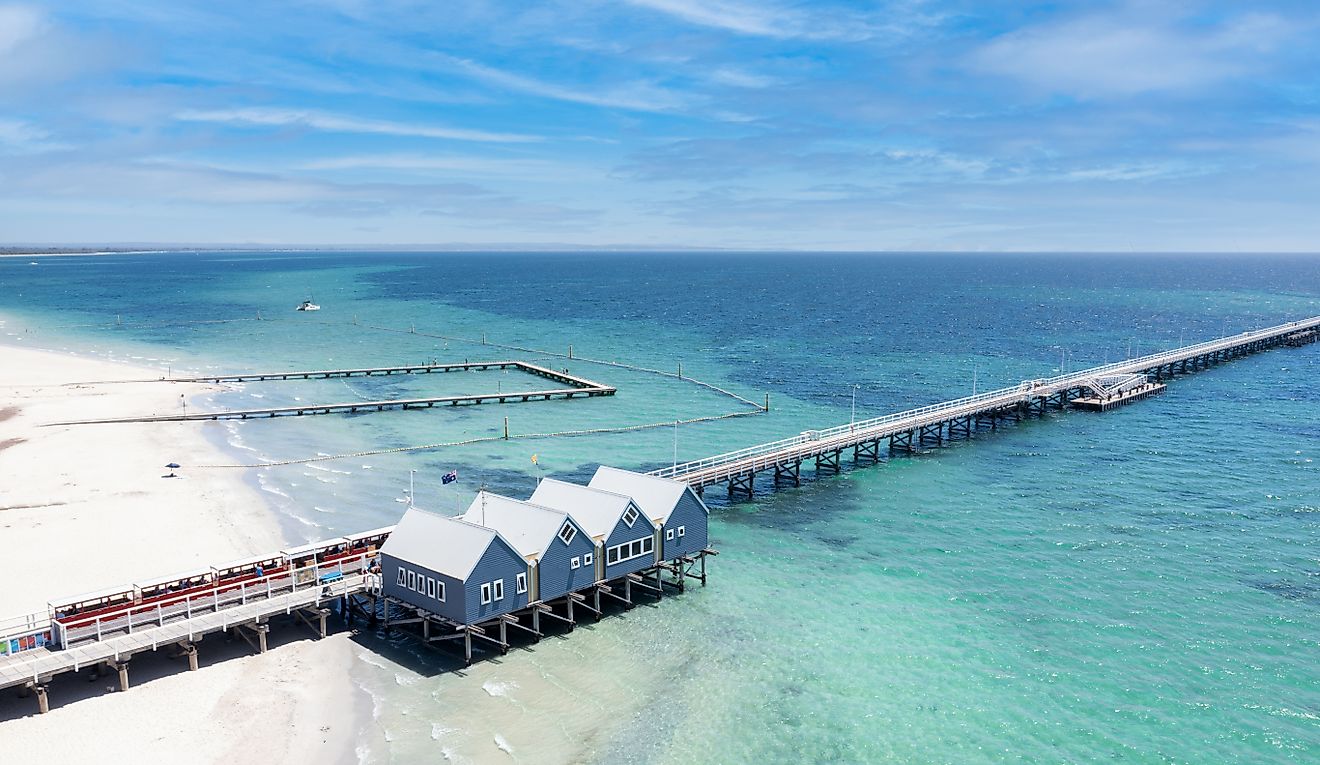Flags, Symbols & Currency of Azerbaijan
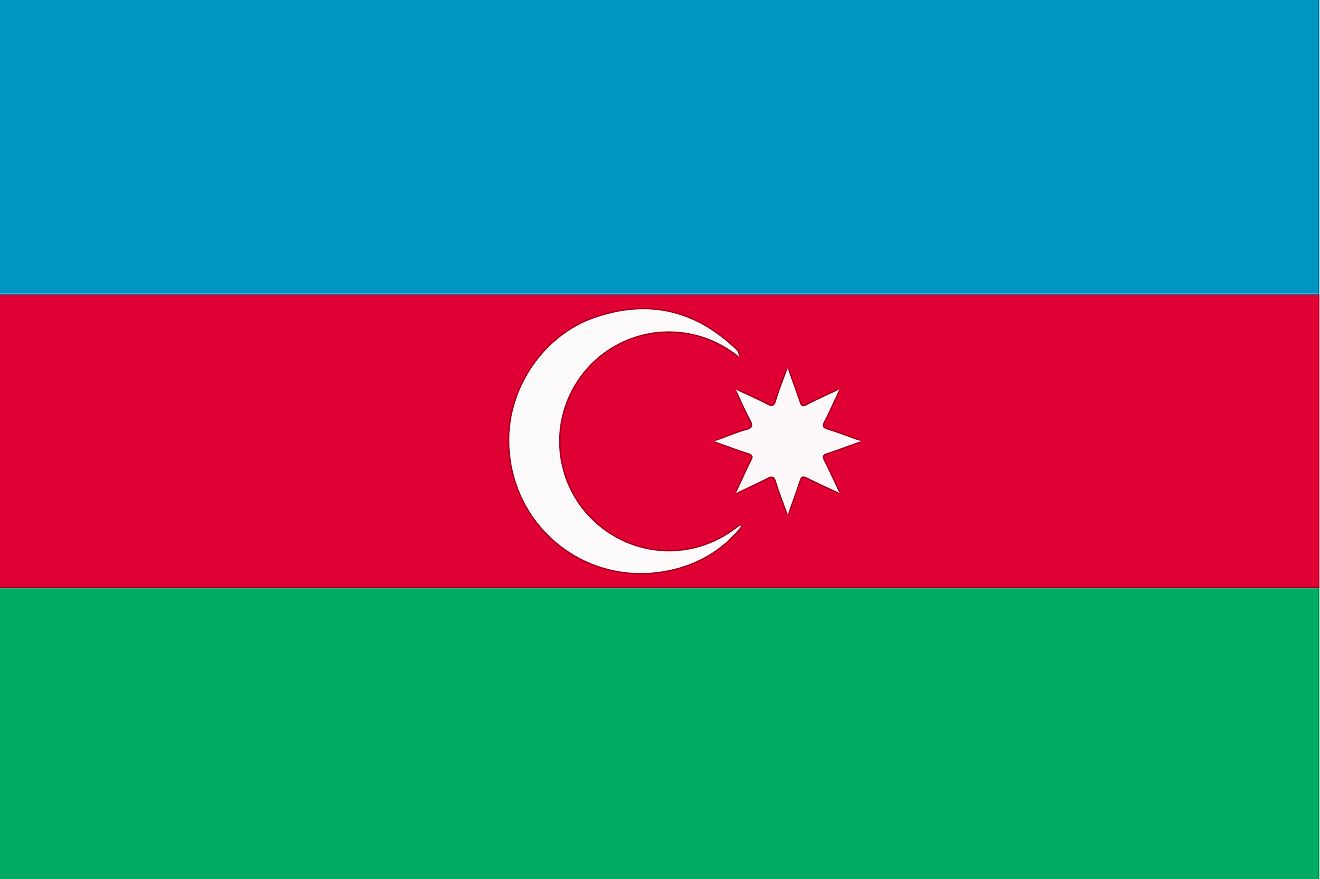
The Republic of Azerbaijan first adopted its national flag and ensign on November 9, 1918. The flag was used until 1920 when the country surrendered to Bolshevik forces and consequently became part of the Soviet Union. The flag was officially re-adopted on February 5, 1991, after the collapse of the Soviet Union. The National flag, which is referred to as "The Tricolor Flag," was designed by Ali bey Huseynzade – an Azerbaijani writer and artist.
The Azerbaijani flag is rectangular and features three equal horizontal bands: sky blue (top), red (middle), and green (bottom). There is also a vertical crescent moon and a star with eight points, both in white; featured at the center of the red stripe. The sky blue color of the flag recalls Azerbaijan's Turkic heritage and represents Turkic multinationalism. The red color symbolizes the development of democracy in the nation and stands for modernization and progress for establishing a modern state. The green color symbolizes the strong influences of the religion of Islam (Muslim world) on the country. The star and the crescent moon represent Islam (Turk Insignia), although some historians disagree with this notion, especially in regards to the star’s eight points. Historian, Fatali Khan Khoyski claimed the points represent every letter on the country’s name (using an Arabic spelling), while others believe they represent Azerbaijan’s eight Turkic groups, including Ottomans, Tatars, and Azeris. The height to length proportions of the flag is 1:2.
History of the Azerbaijani Flag
When Azerbaijan gained independence, it adopted a national flag. However, this flag was replaced after the Russian army invaded the country on April 28, 1920. Azerbaijan was renamed the Azerbaijan SSR, and became part of the Soviet Union, uniting with Georgia and Armenia to form the Transcaucasian Socialist Federative Soviet Republic (TSFSR). This republic adopted a rectangular red flag which had a sickle and hammer inside a star and the initials ЗСФСР. When the TSFSR broke up in 1936, Azerbaijan SSR took eight different flags, the final one being issued in 1952. The current flag came into use in the late 1980s, during an independence demonstration. In 2009, the Azerbaijani government declared November 9 as National Flag Day, which was intended to be a day to respect the flag together with its history and symbolism.
Symbols of Azerbaijan
Coat of Arms of Azerbaijan
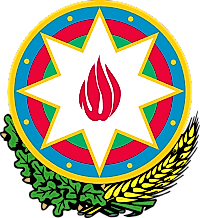
Azerbaijan's coat of arms (also considered as a national emblem) was approved on January 19, 1993. The emblem is a mixture of both traditional and modern symbols and is composed of an eight-pointed star encircled by layers of green, red and blue. Similar to the national flag, the red color represents development and democracy, the blue color showcases that Azerbaijanis are one of the Turkic peoples and the green color is symbolic of the Islamic influences on the country. The eight-pointed star stands for the eight branches of the Turkic peoples and between each point of the star, a smaller yellow-colored circle can be found. At the central point of the emblem is a stylized red flame, bearing the words ‘Allah’ written in Arabic text. This flame is a representation of the Muslim population of the country as well as the country’s eternal natural oil and gas resources. The emblem is supported by a crossed stalk of yellow wheat and green oak branches. The wheat symbolizes abundance in Azerbaijan and is also its main staple food. The oak tree symbolizes power and youth in time.
National Animal - Karabakh Horse

Karabakh horse is the national animal of Azerbaijan. It is of great cultural significance for the people of Azerbaijan and is recognized for its beauty, strength, intelligence, and immense energy. It has currently become ‘critically endangered.' It is a racing and riding horse that is named after Karabakh in southern Caucasus where it was originally bred. Although internationally recognized as part of Azerbaijan, Karabakh continues to be a disputed territory. The Karabakh influenced the development of another famous horse breed called the Russian Don.
National Anthem
- Anthem Title: Azərbaycan Marşı (“March of Azerbaijan”)
- Music Composer: Uzeyir Hajibeyov
- Lyricist: Ahmad Javad
- Date of Adoption: May 27, 1992.
The national anthem of Azerbaijan is Azərbaycan Marşı (“March of Azerbaijan”). Uzeyir Hajibeyov – a prominent composer had composed the music, while Ahmad Javad – an Azerbaijani poet had written the lyrics. The National Assembly of the Republic of Azerbaijan approved a law on the national anthem of the Republic of Azerbaijan on May 27, 1992.
The draft of the national anthem was prepared in 1919-1920, but due to the historical-political events of that time, the anthem could not be legislatively adopted. In 1922, it was replaced by “The Internationale”- a Soviet communist anthem. During WWII, the new Soviet national anthem had replaced “The Internationale” and an additional anthem of the Azerbaijan Soviet Socialist Republic was installed in 1944. After the dissolution of the Soviet Union in 1992, the original anthem was readapted and restored.
Azərbaycan Marşı (Latin)
Azərbaycan! Azərbaycan!
Ey qəhrəman övladın şanlı Vətəni!
Səndən ötrü can verməyə cümlə hazırız!
Səndən ötrü qan tökməyə cümlə qadiriz!
Üçrəngli bayrağınla məsud yaşa!
Üçrəngli bayrağınla məsud yaşa!
Minlərlə can qurban oldu,
Sinən hərbə meydan oldu!
Hüququndan keçən əsgər,
Hərə bir qəhrəman oldu!
Sən olasan gülüstan,
Sənə hər an can qurban!
Sənə min bir məhəbbət
Sinəmdə tutmuş məkan!
Namusunu hifz etməyə,
Bayrağını yüksəltməyə
Namusunu hifz etməyə,
Cümlə gənclər müştaqdır!
Şanlı Vətən! Şanlı Vətən!
Azərbaycan! Azərbaycan!
Azərbaycan! Azərbaycan!
“March of Azerbaijan”
Azerbaijan! Azerbaijan!
Oh, you glorious motherland of the brave child!
We are all together ready to give our lives for you!
We are all together strong to sacrifice our blood for you!
Live blessed with your three-colored flag!
Live blessed with your three-colored flag!
Thousands of lives were sacrificed,
Your chest became an arena for battles!
Soldiers gave their life for you,
All of them became heroes!
You shall be a garden full of roses
The sacrifice of our souls anytime for you!
Never-ending love for you
Has got a place in my heart!
In order to maintain your honor,
In order to elevate your flag,
In order to maintain your honor,
The young are intended sententiously!
The glorious Homeland, The glorious Homeland,
Azerbaijan! Azerbaijan!
Azerbaijan! Azerbaijan!
The Currency of Azerbaijan is the Azerbaijani manat
The official currency of Azerbaijan is the Azerbaijani manat (m., AZN). The currency symbol was designed by Robert Kalina, who also designed the Syrian pound and the euro. The sub-unit for the manat is 100 qəpik, and the currency is circulated by the Central Bank of Azerbaijan.
The word manat is derived from the Latin word “Moneta” referring to the two Roman goddesses. As of June 2017, the manat is stable at 1.7 to 1 US dollar. Since 2006, a fragment of the national anthem lyrics has been depicted on the obverse of the Azerbaijani 5 manat banknote.
Historical Currencies Of Azerbaijan
Transcaucasian ruble
The history of the Azerbaijani manat dates back to 1919-1923 when it replaced the Transcaucasian ruble at par value. At that time, the currency (First manat) only existed in banknotes whose denominations were 500, 250, 100, 50, and 25 manats. This manat was later replaced by the second Transcaucasian ruble after Azerbaijan became a part of the Transcaucasian Soviet Federal Socialist Republic. A second manat was introduced between 1992 and 2006 and replaced the Soviet ruble at an exchange rate of 10 rubles = 1 manat.

